 I'm by far the best guide in all of Montana. Unfortunately, I think we've somehow ended up in Manitoba. 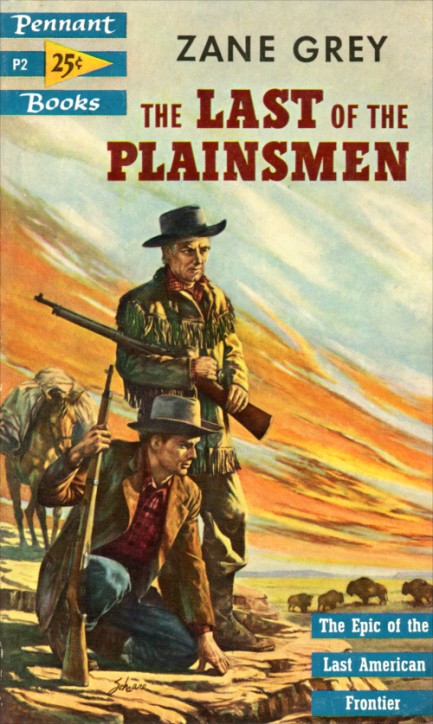
Above: a very nice cover painted by Harry Schaare for Zane Grey's western The Last of the Plainsmen, originally published in 1908, with this Pennant edition coming in 1953. The book tells the story of real life frontiersman Buffalo Jones, aka Charles Jones, and a 1907 journey he made with Grey, so we can assume these two characters in the art are them, one of those rare times an author appeared in his own cover art. The story is actually set in Arizona, not Montana, just in case you took our subhead literally, which you never should. We were going to go with the best guide in Arizona ending up in Sinaloa, but we flipped a buffalo nickel and Canada won.
 Calcutta is heavy on looks but light on substance. 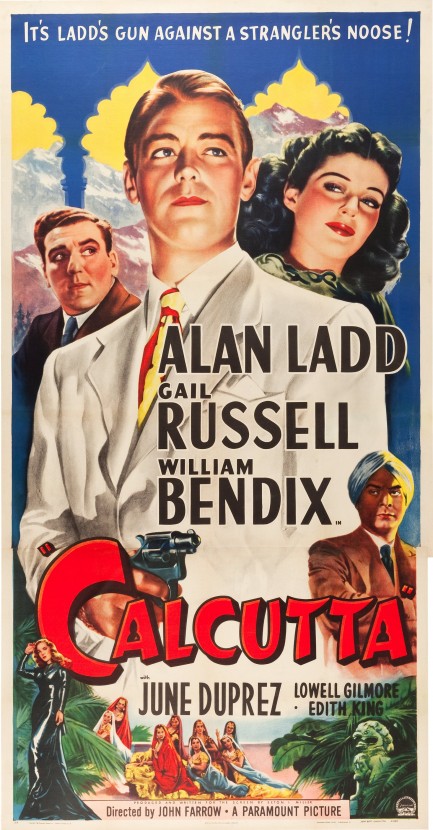
We'll tell you right out that Calcutta came very close to being an excellent movie, but doesn't quite get over the hump. It deals with a trio of pilots flying cargo between India and China on fictional China International Airways. The trio, Alan Ladd, William Bendix, and John Whitney, stumble upon a highly profitable international smuggling ring and quickly find that the villains play for keeps. Along with the fliers, the film has Gail Russell as Whitney's girlfriend, and June Duprez as a slinky nightclub singer. While the exotic setting marks the film as an adventure, it also fits the brief as a film noir, particularly in Ladd's cynical and icy protagonist.
As we said, the movie isn't as good as it should be, but there are some positives. Foremost among them is Edith King as a wealthy jewel merchant. She smokes a fat cigar, the masculine affectation an unspoken but clear hint of her possible lesbianism, and with a sort of jocular grandiosity simply nails her part. Another big plus is the fact that the miniature work (used in airport scenes), elaborate sets and props, and costumed extras all make for a convincing Indian illusion—definitely needed when a movie is filmed entirely in California and Arizona (Yuma City and Tucson sometimes served as stand-ins for exotic Asian cities, for example Damascus in Humphrey Bogart's Sirocco).
On the negative side, Calcutta has two narrative problems: the head villain is immediately guessable; and Russell is asked to take on more than she can handle as an actress, particularly as the movie nears its climax. Another problem for some viewers, but not all, is that the movie has the usual issues of white-centered stories set in Asia (or Africa). However, within the fictional milieu the characters themselves seem pretty much color and culture blind, which isn't always the case with old films. Even so, the phalanxes of loyal Indian servants, and the dismissiveness with which they're treated—though that treatment is historically accurate—probably won't sit well with a portion of viewers.
Here's what to focus on: Alan Ladd. He's a great screen presence, a solid actor in the tight-lipped way you often see in period crime films, and the filmmakers were even smart enough to keep him shirtless and oiled for one scene. We swear we heard eight-decade-old sighs on the wind, or maybe that was the Pulp Intl. girlfriends. They'd never seen Ladd before, but immediately became interested in his other films. We were forced to tell them he was a shrimpy 5' 6” and they were a bit bummed. But he had it—and that's what counted. His it makes all his films watchable, but doesn't quite make this one a high ranker. Calcutta had its official world premiere in London today in 1946.
 One small film for sci-fi, one giant Lepus for bad cinema. 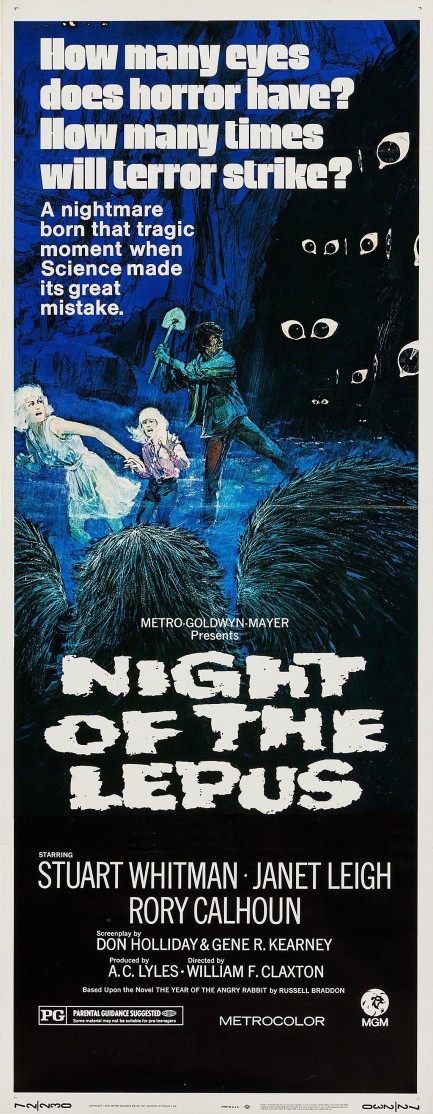
This rare poster was made to promote Night of the Lepus, and those creepy eyes in the dark belong to rabbits. Giant rabbits. Lepus. Makes sense, right? Stuart Whitman, Rory Calhoun, Janet Leigh, and DeForest Kelly, post-Star Trek, star in what is supposed to be an epically bad film, but to us it was more like standard low level sci-fi or horror (take your pick). The special effects drag down the entire enterprise, but that's almost par for the course when it comes to this genre during the time period. We can imagine the actors signing on and being told the special effects would carry the movie. “Yeah, we've got top people on this giant rabbit thing. They'll look totally convincing!” Well, they don't, but neither do the monsters in 90% of vintage sci-fi.
If we had to guess, we'd say one reason people think this film is so bad is that there are numerous inadvertently funny lines of dialogue, for example when Kelly says, “We've got three holes to blow,” and when Chuck Hayward says, “I'm ready to release the gas as soon as they come out.” But the script is coherent, and the acting is more than adequate, so those two positives alone keep this out of the Plan 9 and Starcrash sub-basement category, as it brings to life the story of scientists and ranchers trying to reduce the number of feral rabbits in Arizona. Researchers Whitman and Leigh turn to hormones to shut off the bunnies' breeding capabilities, but this accidentally causes them to grow to enormous size—and makes them hopping mad too. In short order they overrun the nearby town and all the humans are fleeing for their lives.
Yes, the movie is silly. It's a clinic in the limited utility of forced perspective for trying to make believable monsters, an endeavor additionally undermined by the inconvenient fact that giant bunnies are still cute. But can you really pass up the chance to see Bones from Star Trek ambling around the high desert? And Janet Leigh is always sight to behold, here settling deep into an elegant milfhood, forty five with a cotton candy afroperm that she makes look as regal as a platinum crown. Epically bad? It's bad alright, mainly because it lacks distinction. But maybe you should just watch it and decide for yourself where it ranks. Night of the Lepus premiered today in 1972.  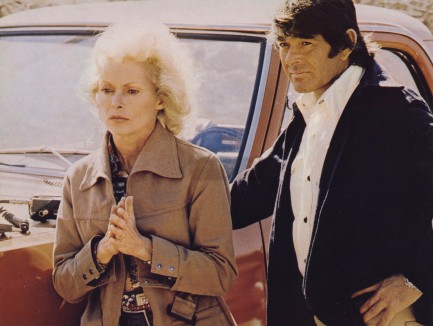   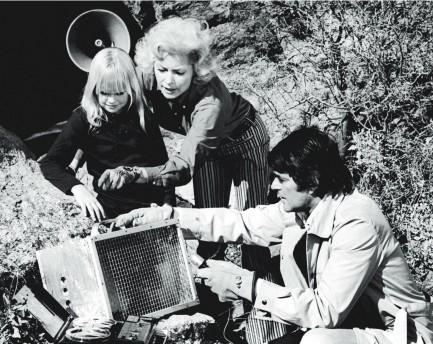 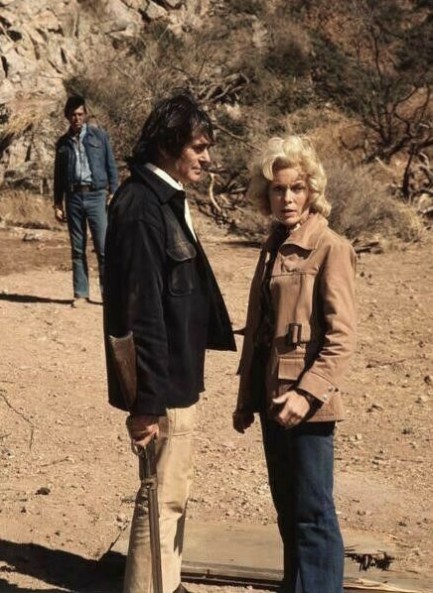  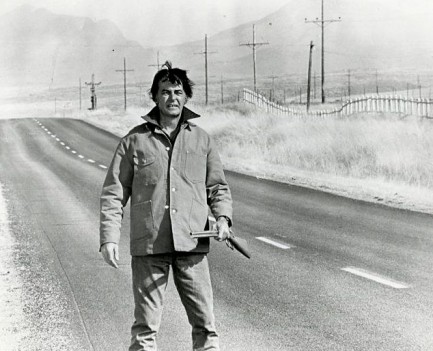  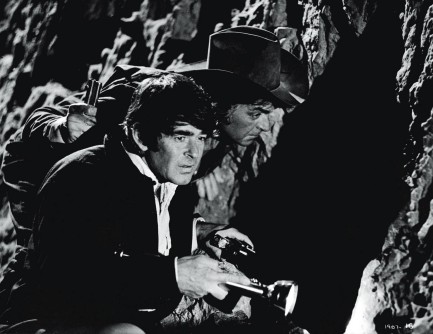 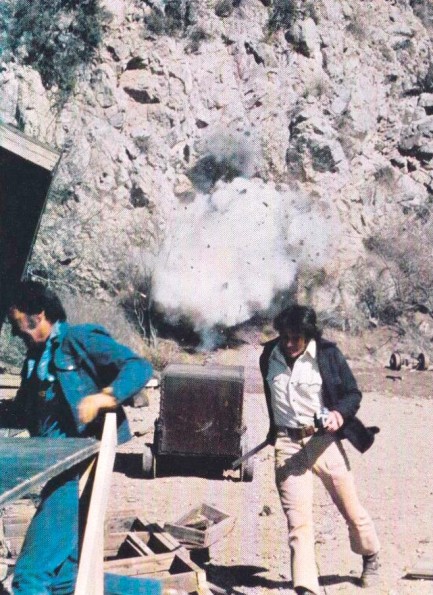 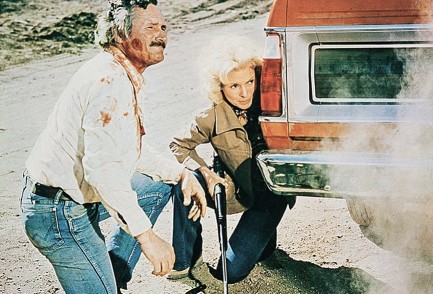 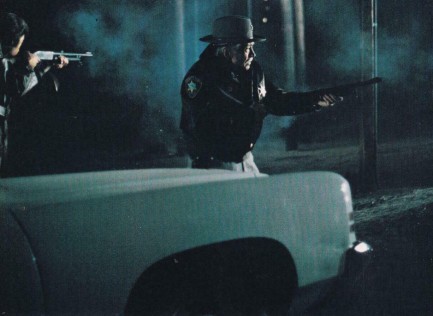 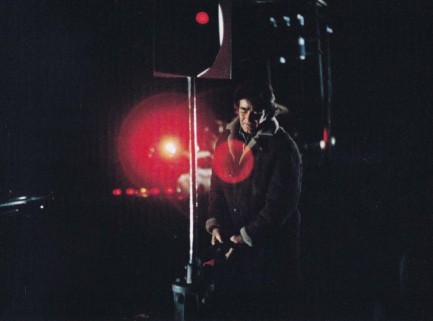 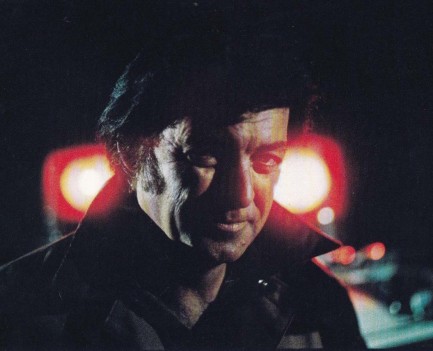 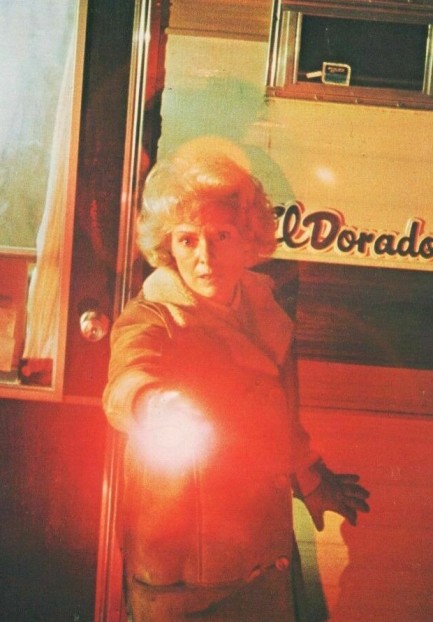
 Casablanca drifts 2,500 miles east and loses a little something along the way. 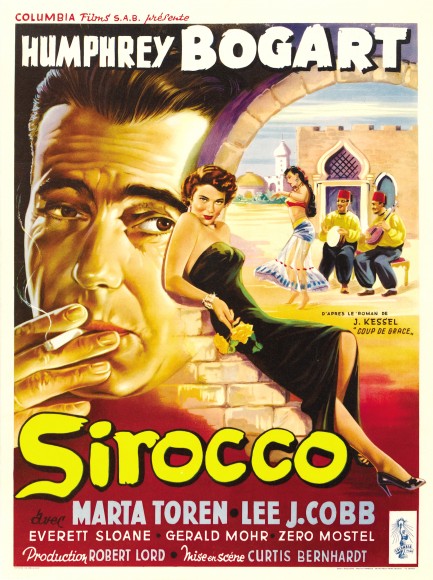
Above you see a nice French poster for the Humphrey Bogart adventure Sirocco, which we touched upon briefly several months back. As we noted then, Columbia Pictures promoted the film as being, “beyond Casablanca...” but Sirocco comes up short in that department. How could it not? It's like saying, “beyond chocolate chip cookie dough ice cream,” or “beyond a raspberry gin Ricky,” or “beyond the 2003 Hurricanes-Buckeyes NCAA Championship Game.” These things are not possible. But Sirocco is actually pretty good anyway, owing largely to its setting in 1925 Damascus, Syria (the film was actually shot in Yuma, Arizona, but the illusion worked adequately).
Plotwise, local independence fighters are trying to drive out French occupiers via any means deemed necessary, including what we call today terrorist bombings. Bogart plays Rick from Casablanca, except he's named Harry Smith. But he's the same cynical, opportunistic, womanizing lone wolf he was before, who instead of running a bar, runs guns. He has no ideology in his profession, except love of money, and will work for whoever can hire him, Syrian or French. As the situation in Damascus grows increasingly fraught he finds himself unwillingly stuck between the locals and the occupiers. He also finds himself in a love triangle with slinky Märta Torén and a French military officer played by Lee J. Cobb.
The movie quickly coalesces around what we like to think of as the big three Bogart plot devices: romantic feelings threaten to upset his hard-won cynicism, he must make a choice between desire and conscience, and he must beat the clock if he hopes to get out of Dodge with his skin intact. Beyond Casablanca? Columbia pretty much strip mined Casablanca, is what happened. Even so, Bogart had few serious misses in his career, and Sirocco isn't one of them. Fans will get to see him doing exactly what made him an icon, and for that reason alone we think it's worth a watch. After premiering in the U.S. in mid-1951, it opened in France today the same year.   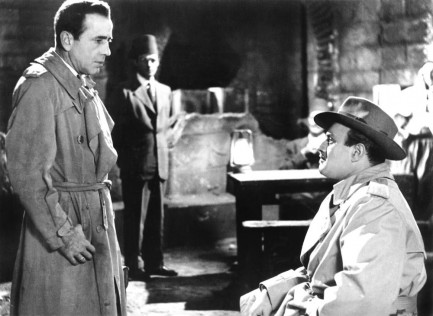   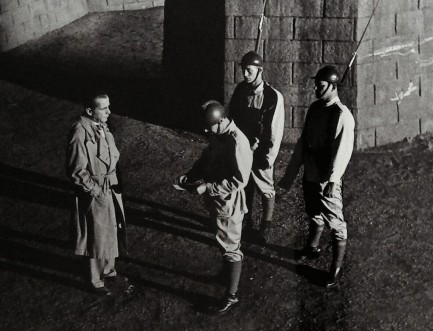 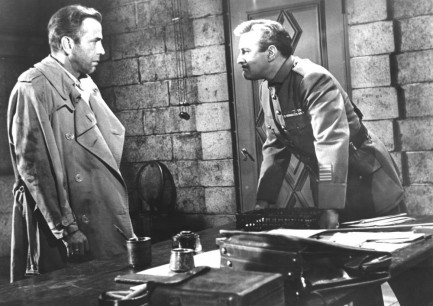 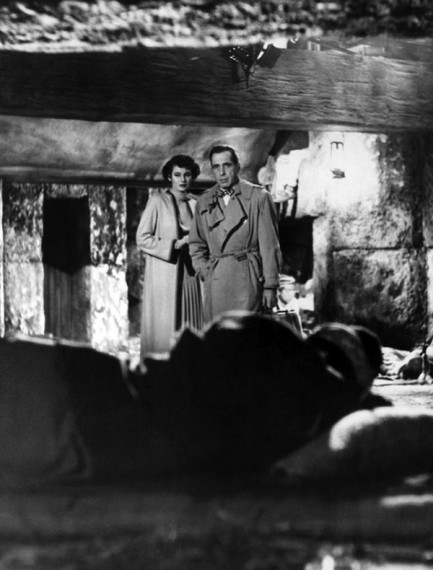 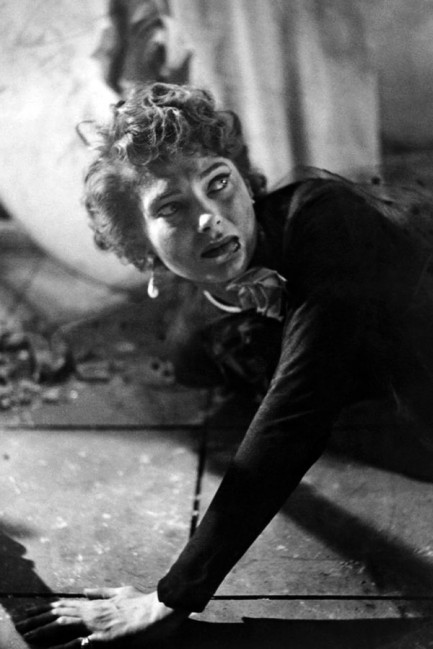 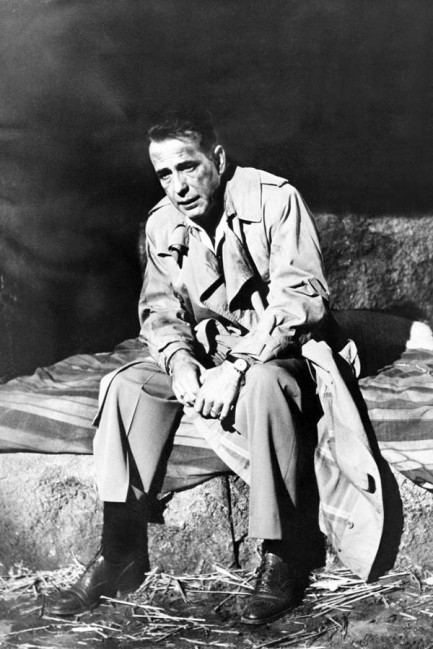 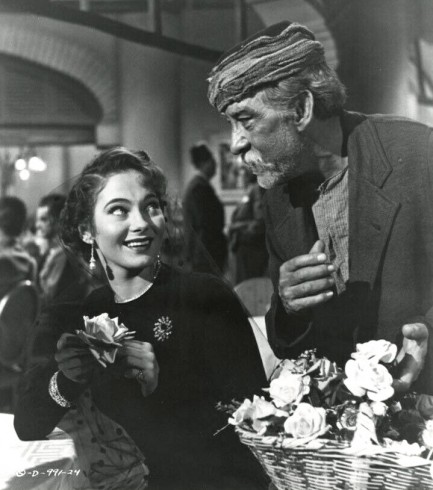 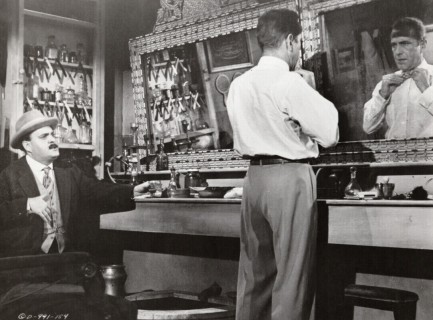 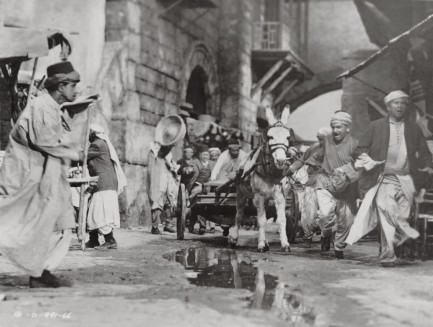  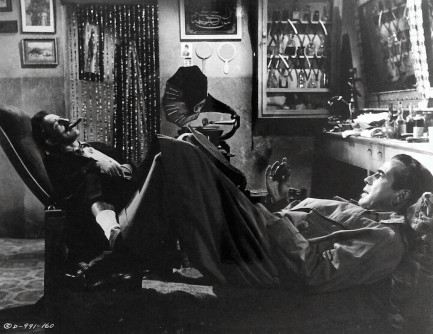 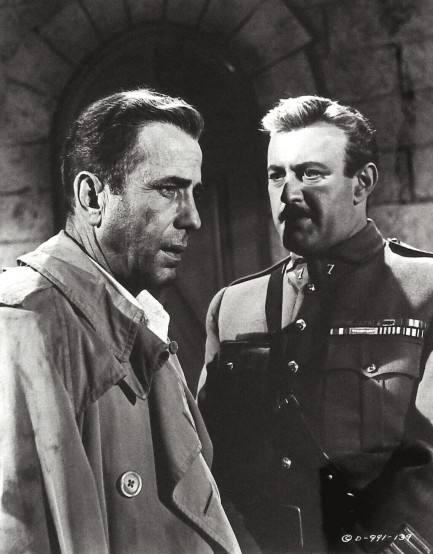 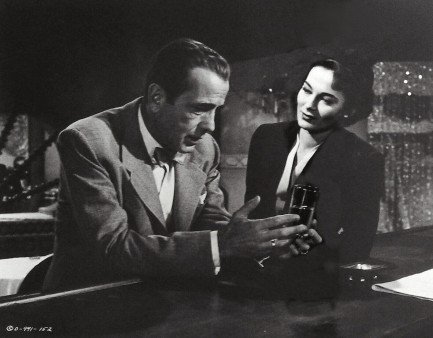 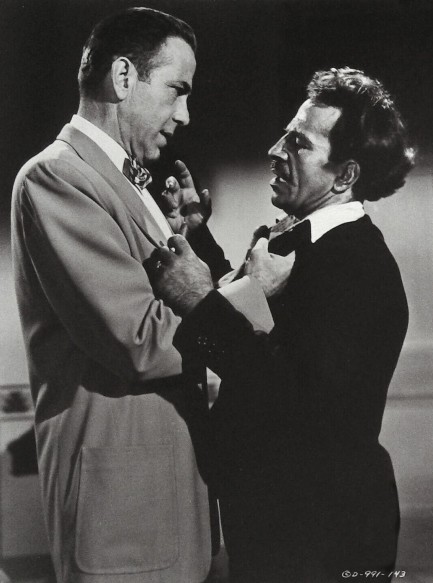
 This is where being deputy in a one-horse town really sucks. 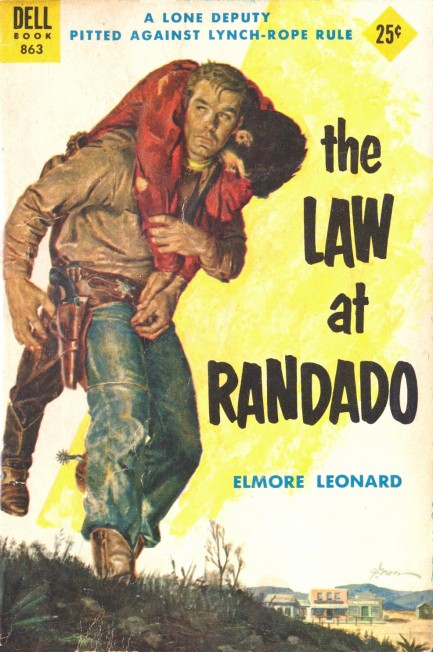
Elmore's Leonard's second novel The Law at Randado was published in 1954, and it debuted in paperback as this Dell edition with evocative George Gross cover art. Leonard wrote scores of fascinating characters during his long career. The villain here is yet another. Arizona cattleman Phil Sundeen inherited his wealth but pretends he earned it. Though he doesn't truly have a head for business the sheer size of his fortune prevents his numerous failures from ruining him. He commits transgressions that range from the rude to the unethical to the outright illegal. Men work for him knowing they'll eventually be humiliated or cheated, but they tell themselves that maybe there's a way to benefit from the relationship before it implodes.
When Sundeen's stupidity and vanity catalyze a deadly mob, deputy sheriff Kirby Frye wants to hold him to account. Though Sundeen encouraged the chaos, rather than physically taking part, there's no doubt he's responsible for the deaths. But most of the people in the town of Randado defend Sundeen. They all harbor fantasies that by staying on his good side fortune will one day smile upon them. His inner circle protect him, but they know he's wrong. They've gained considerable prestige clinging to him, but they try to make him face the reality of his situation anyway, only to learn that their enablement of him—and the enablement of all the sycophants who came before them—have warped Sundeen's sense of reality:
Sundeen looked up now, faintly grinning. “R.D., you old son of a bitch, you telling me [I'm] wrong?
“I'm facing the facts!”
“Facts don't mean a thing.”
“They do when you're faced with them!”
“I don't see 'em facing me. George, you see any facts facing [me]?”
And presented with this, Sundeen's enablers toss what remains of their integrity into a ditch. In public they claim his obvious crimes are not crimes at all, but they know they're lying, and in private they realize he will only get worse. So does Deputy Frye, which is one reason he's determined to apply the law to Sundeen, same as anyone else. His legal authority comes straight from the county seat in Tucson, but that authority means little to a group willing to see their meal ticket as oppressed by an illegitimate government. Frye has no inkling of where his ideals of evenhanded justice will lead, or what they will cost.
Elmore Leonard was a clever conceptualist—one of the best. The Law at Randado is at its core a tale of order versus chaos, central government over local law, and of whether people believe in the oft-cited principles of what America claims to be. When push comes to shove, those who support Sundeen want those principles binned. Even Frye's girlfriend wants Sundeen to be given a pass, and not just because her father is one of Sundeen's clan. She believes what other townspeople believe: that politicians in Tucson have no right to tell people in Randado what to do. Frye's stubborn insistence on law and order is at first an irritant to Sundeen, then an affront, then a legitimate threat that must be destroyed.
One magical aspect of fiction is that, in skilled hands, what seems murky in real life can be made utterly clear on the written page. Elmore Leonard died nearly a decade ago, so The Law at Randado isn't about events of recent years, but it's relevant because it's about the willingness of some to view the enforcement of the law as transactional. To such people the law is sacrosanct, but only as long as it's applied to others. Leonard explores a foundational civic paradox—that people accumulate power thanks to the stability and protection of the law, then suddenly believe the law exists only as a tool for their ambitions and desires. The Law at Randado explores that idea and does it exceedingly well.
 Steve Sandor draws first blood before Rambo arrives on the scene. 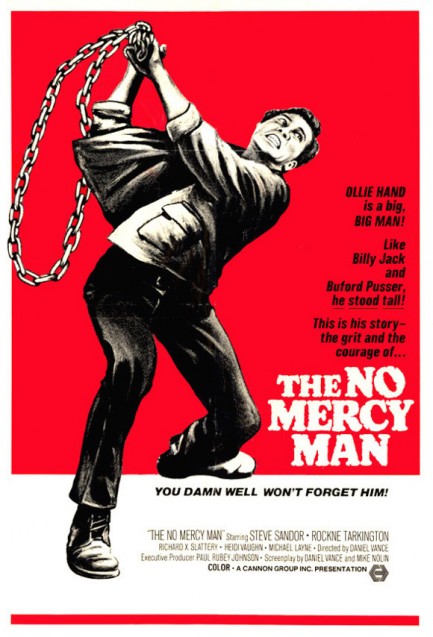
Above you see a low rent poster for The No Mercy Man, aka Bad Man, aka Trained to Kill: USA, which premiered this month in 1973 starring Steve Sandor and Rockne Tarkington, the latter last seen chilling with his pet lion in Black Samson. The No Mercy Man is a mash-up of a biker film, a High Noon-style western, and a blaxploitation film, done on the cheap. And of course with low budgets usually come bad acting, weak scripting, all thumbs in the technical departments, and a paucity of promo images (we found two). This film also has, as a special bonus, a deeply earnest theme song that sucks terribly:
And when he loves you, he loves as hard as he can. You get no mercy, naw naw naw, from the no mercy man. Love and lust are the same to him, just like being raped by the Devil. His kind of love can only bring you sin, and his arms can only bring you evil... whooooa ohhh ohhh...
 The “no mercy man” of the lyrics is the protagonist Olie Hand, played by Sandor, which means being raped by the Devil is about the hero. Incredibly, the closing theme is even worse, with the lyrics, “no one understands you ’cause you can't be understood.” The “no mercy man” of the lyrics is the protagonist Olie Hand, played by Sandor, which means being raped by the Devil is about the hero. Incredibly, the closing theme is even worse, with the lyrics, “no one understands you ’cause you can't be understood.” Well, let's give it a try. Olie Hand is a Vietnam veteran who did terrible things in the jungles of Southeast Asia, and has now returned to his Arizona hometown to find it plagued by amoral carnies and petty criminals. He's haunted by the war. The sight of violence sends him into a mental tailspin, as horrible memories of his time in action rise to the surface. Despite his aversion to violence, it isn't long before he's forced to take on the men who are turning his town upside down.
Hand is legitimately psychologically damaged, which makes him a clear precursor to Sylvester Stallone's disturbed John Rambo from First Blood. After that film became a runaway hit Stallone booted the mental imbalance of the Rambo character out of the franchise, which freed cinemagoers to revel in hyperviolence without reflection. Rambo became the type of archetypal tough guy many Americans imagine themselves to be—the basically solid guy who tries very hard to avoid trouble, but once he's pushed across the line, boy howdy, you better open wide for your just desserts. Ollie Hand's relationship to John Rambo is clear, but he also brings to mind another iconic movie vigilante.
The year after The No Mercy Man appeared Charles Bronson brought everyman architect Paul Kersey to the screen in Death Wish. Kersey wasn't tortured by previous violent acts; he was justified by current events to commit violence. Killing wasn't harmful but healing, and took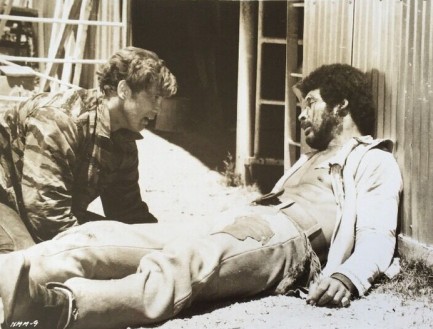 place vigilante style because of the limits of the law. It was done reluctantly, but creatively, because the capacity for baroque forms of murder lurked beneath the surface all along. American action movies have largely resided in that space ever since: violence is a rarely used but well-oiled tool every real man has at the ready, tucked between his pliers and his socket wrench. place vigilante style because of the limits of the law. It was done reluctantly, but creatively, because the capacity for baroque forms of murder lurked beneath the surface all along. American action movies have largely resided in that space ever since: violence is a rarely used but well-oiled tool every real man has at the ready, tucked between his pliers and his socket wrench.
The No Mercy Man is exploitative schlock, but it's at least a bit more thoughtful than the average revenge flick. It suggests there's a price paid for violence beyond mere regret, or being turned into a taciturn curmudgeon whose warm side can eventually be teased out by the right woman or a precocious kid. The price is that you may be so altered that others are unable recognize you as human. If you've actually read your U.S. history—we mean the stuff they only gloss over in school—you know that violence has always been a first resort. The No Mercy Man acknowledges that this isn't ideal, but of course in the end decides pacifism is for pussies. It is, after all, still an American movie.
 Fatal confrontation leaves world a sadder place. 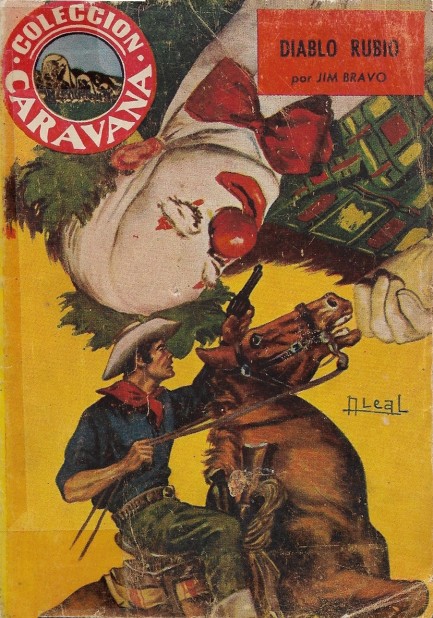
Here's a colorful little something from our house hunting raid last week, a pocket paperback entitled Diablo Rubio, or “blonde devil,” written by Jim Bravo for Madrid based Publicaciones Crucero. The narrative is set in Arizona and concerns a famed gunman and the rivals that dog his heels. We haven't actually read it yet. We can read Spanish but we're too lazy to do it right now, even though we're dying to know why the clown got shot. Ever been to a rodeo? Cowboys and clowns are natural allies, so there must be a complex story behind this tragedy. The art is uncredited, of course, but seems to be signed “M Leal” or “N Leal.” We get no hits on either name. Nor do we get hits on writer Jim Bravo, an obvious pseudonym. But we'll dig, and if we find anything we'll report back.
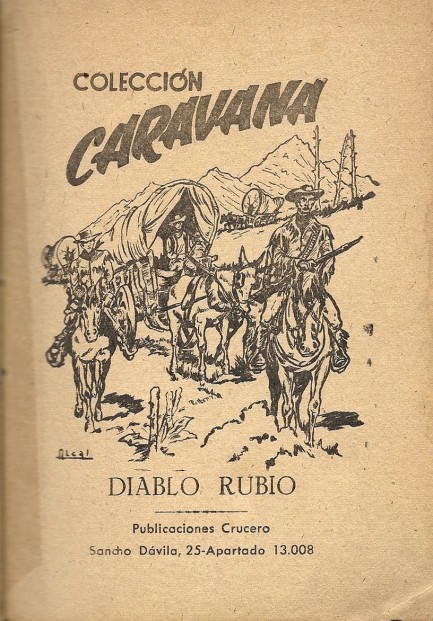
 So that's where your arm went. The damsel in distress thing was just an act, wasn't it? 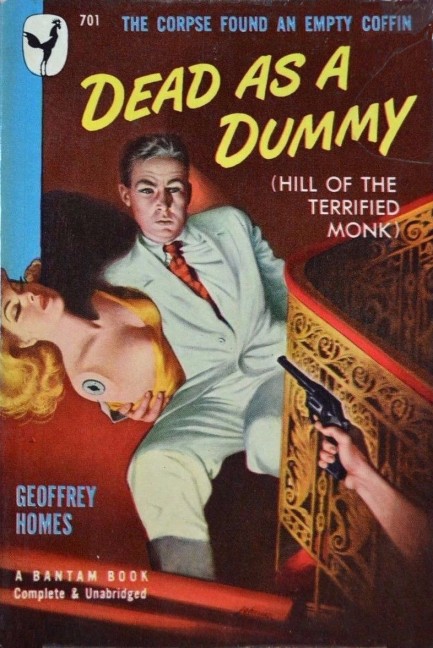
Dead As a Dummy is a thriller set in the unlikely locale of Tucson, Arizona, where a premiere for a horror movie called The Invisible Zombie goes completely awry when it becomes the backdrop for three murders. The main character is Ben Logan. His job is kind of hard to describe. Basically, he works for a cinema chain, and he handles whatever needs to be handled. Think of him as a troubleshooter. He puts together a lobby display for The Invisible Zombie featuring a coffin with a mannequin corpse inside, only to find the set-up put to use by a clever killer. The main attraction here besides the plot is good southwestern flavor, something author Geoffrey Homes was adept at after previous forays in the same milieu. The cover art on this is generally credited to George Fullington, but that's one of those cases of the internet replicating an error. It happens. We've done it ourselves. The art is by Ray Johnson—says so right on the second page—and the copyright is 1949.
 You spend all week looking forward to Saturday and then this happens. 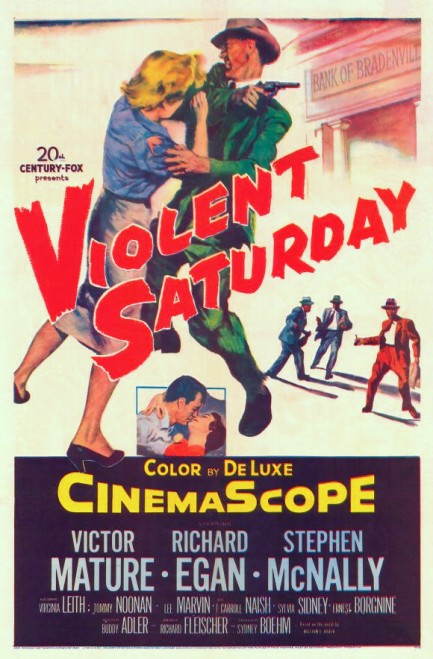
In Violent Saturday, a group of people are loosely connected to a smalltown bank that has been targeted by a trio of robbers. Yes, it's a heist double feature at the Noir City Film Festival. We meet the big shot at a local mine who is one of the bank's most important customers. We meet his cheating wife, who's having an affair with a bank employee. We're introduced to a group of Amish who have no idea their nearby community has been chosen as a rendezvous point. We get to know the bank manager—and the woman whose window he peeps through at night. As you might guess from our rundown, the examination of all these characters and their situations is detailed. In fact, it lasts two thirds of the film. When the bank is finally robbed, some of these people will find themselves in the wrong place at the wrong time as the criminals' careful plan degenerates into a kill-or-be-killed fiasco. Lethal results are coming but we have no idea who will survive. Everyone is flawed, everyone has hope for a good future, but not all of them will get to see it. Violent Saturday is a DeLuxe color production rather than a standard black and white film noir. Set in Arizona, it was dubbed "southwestern noir" by the Village Voice, but really it's just a tidy little thriller—with an untidy little finish. We think it fits nicely on the Noir City slate. 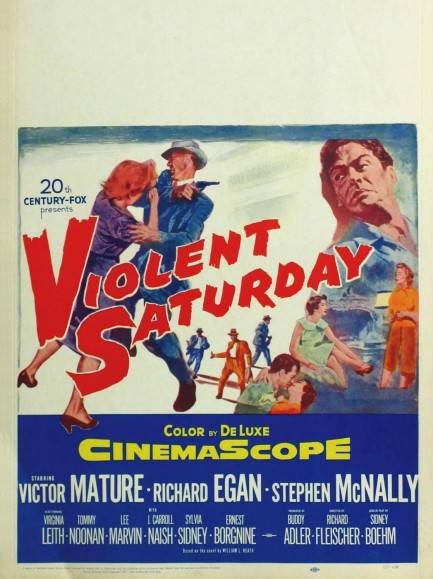
 Devil worshippers give politicians another harsh lesson in Constitutional law. 
The folks at the Satanic Temple have engineered a cage fight against the political establishment once again. We wrote about how they made a group of Oklahoma lawmakers look like idiots a couple of years ago. The politicians had decided to use a legal loophole to allow a Ten Commandments monument to be placed on state property, despite the fact that it violated the federal separation of church and state requirement. But the problem with loopholes is that anyone can use them if they have the time and money. Which is exactly what the Satanic Temple did when it designed a Satanist monument for the same plot of land. Needless to say, chagrined lawmakers were left with no choice but ignominious retreat and removed their religious monument.
The Satanic Temple has now taken aim at Christian prayer clubs in public schools. The organization contacted nine school districts across the country this week seeking to launch after school Satanist prayer programs. Their reasoning is the same as before—if Christian clubs are okay on state property, then by extension Satanist clubs must be fine. After all, trenchcoated loners need a place to congregate too. With the Constitution's supremacy clause giving it legal authority over states in the matter, lawmakers have to either allow all religions, including Satanists, equal access to schools after hours, or admit that they are enforcing an unconstitutional preference for Christianity.
We get that it's disconcerting to imagine Luciferian chanting in public schools at night—we've seen our share of horror movies, after all—but even so, these politicians never learn. A charitable interpretation of their folly might be that they're so blinded by belief they've forgotten their religion is just one of many in the country, and one of thousands that have existed across time, but the truth is they're worse than blind—they're deluded. Rather than accept the undeniable fact that the country's founding fathers wanted state and religion kept separate, they've convinced themselves that Jefferson, Madison, et al simply forgot to write special standing for the Christian church into the Constitution. This despite the fact that they amended the document more than ten times, and the very first of those amendments explicitly denied Christianity and all other religions special rights.
When asked for comment, Satanic Church leader Lucien Greaves took time from etching pentagrams and deflowering virgins long enough to suggest that children being threatened with eternal hellfire need the healthy alternative belief system Satanism provides. He's being disingenuous, of course—the Satanists are really just atheists with a finely honed sense of humor. The confrontation promises to be political theater of a uniquely American sort, but it will inevitably end in judicial defeat for Christian clubs. At least until they manage to write Christianity into the U.S. Constitution—not so farfetched, considering there are politicians like Arizona's Sylvia Allen publicly pondering whether her state can force citizens to attend church. Maybe the founding fathers should have taken a tip from Satan and written the Constitution in blood. That way breaking the deal would cost politicians their souls.

|
 |

The headlines that mattered yesteryear.
2003—Hope Dies
Film legend Bob Hope dies of pneumonia two months after celebrating his 100th birthday. 1945—Churchill Given the Sack
In spite of admiring Winston Churchill as a great wartime leader, Britons elect
Clement Attlee the nation's new prime minister in a sweeping victory for the Labour Party over the Conservatives. 1952—Evita Peron Dies
Eva Duarte de Peron, aka Evita, wife of the president of the Argentine Republic, dies from cancer at age 33. Evita had brought the working classes into a position of political power never witnessed before, but was hated by the nation's powerful military class. She is lain to rest in Milan, Italy in a secret grave under a nun's name, but is eventually returned to Argentina for reburial beside her husband in 1974. 1943—Mussolini Calls It Quits
Italian dictator Benito Mussolini steps down as head of the armed forces and the government. It soon becomes clear that Il Duce did not relinquish power voluntarily, but was forced to resign after former Fascist colleagues turned against him. He is later installed by Germany as leader of the Italian Social Republic in the north of the country, but is killed by partisans in 1945.
|

|
|

It's easy. We have an uploader that makes it a snap. Use it to submit your art, text, header, and subhead. Your post can be funny, serious, or anything in between, as long as it's vintage pulp. You'll get a byline and experience the fleeting pride of free authorship. We'll edit your post for typos, but the rest is up to you. Click here to give us your best shot.

|
|




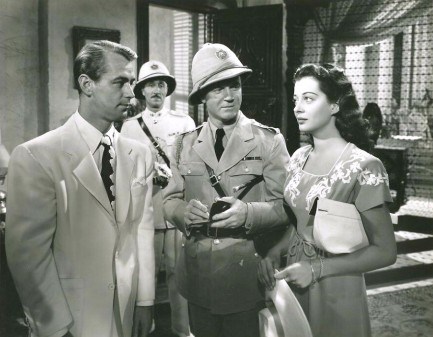
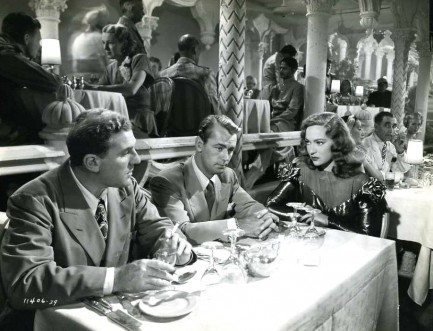
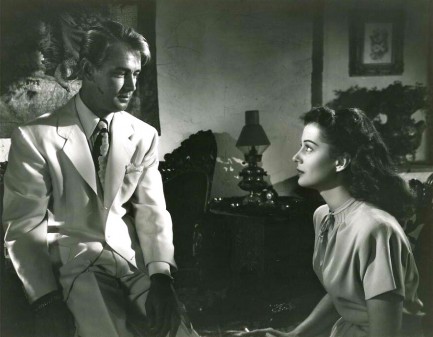
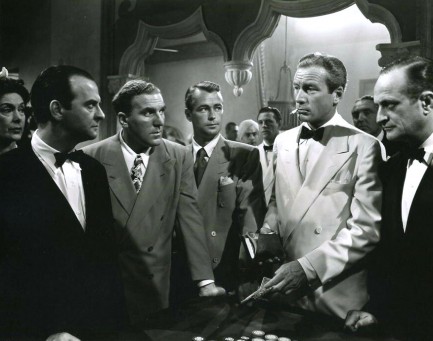
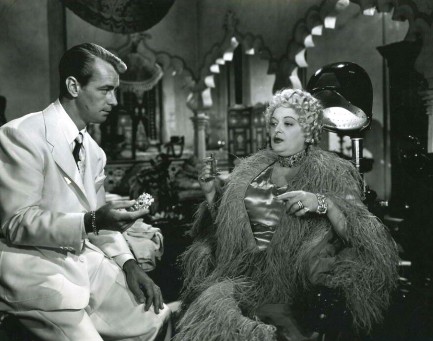
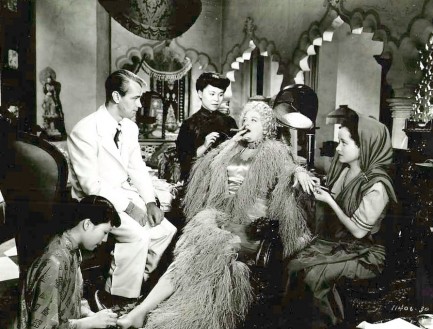
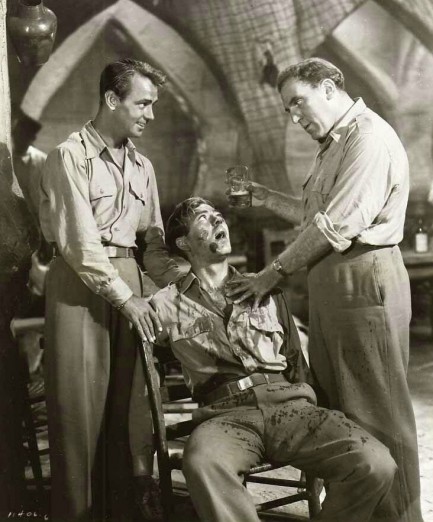
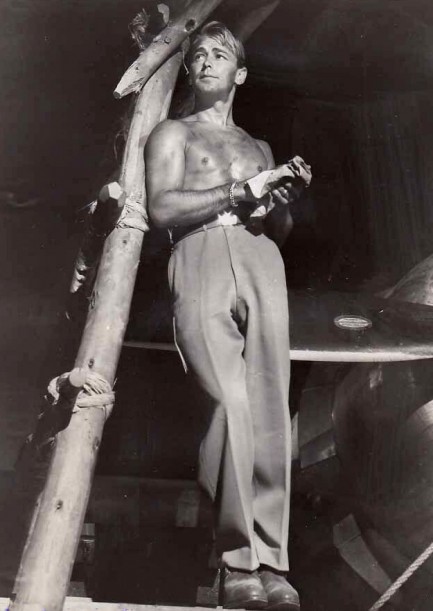
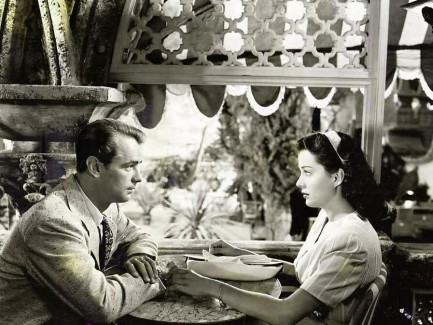
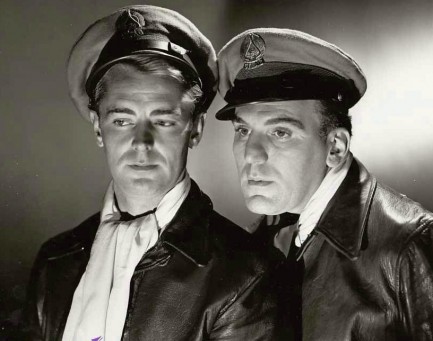
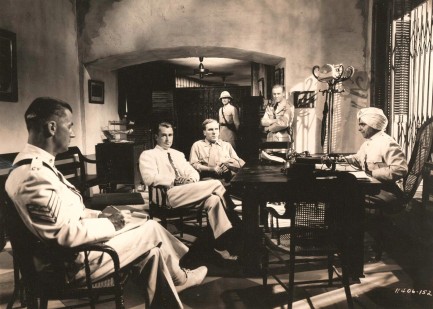
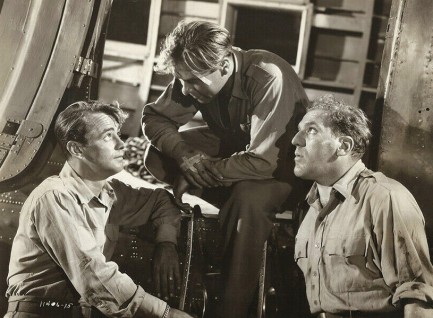
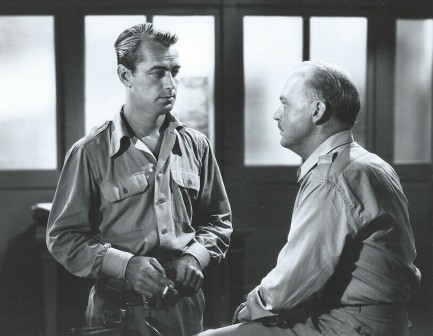
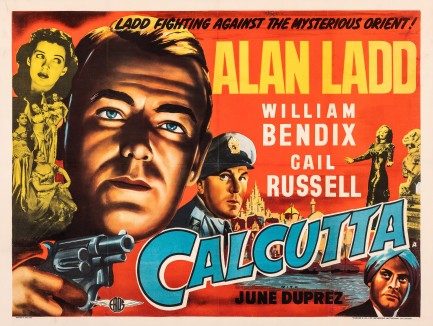
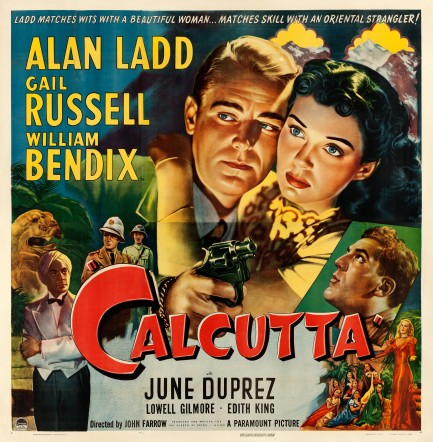










































 The “no mercy man” of the lyrics is the protagonist Olie Hand, played by Sandor, which means being raped by the Devil is about the hero. Incredibly, the closing theme is even worse, with the lyrics, “no one understands you ’cause you can't be understood.”
The “no mercy man” of the lyrics is the protagonist Olie Hand, played by Sandor, which means being raped by the Devil is about the hero. Incredibly, the closing theme is even worse, with the lyrics, “no one understands you ’cause you can't be understood.” place vigilante style because of the limits of the law. It was done reluctantly, but creatively, because the capacity for baroque forms of murder lurked beneath the surface all along. American action movies have largely resided in that space ever since: violence is a rarely used but well-oiled tool every real man has at the ready, tucked between his pliers and his socket wrench.
place vigilante style because of the limits of the law. It was done reluctantly, but creatively, because the capacity for baroque forms of murder lurked beneath the surface all along. American action movies have largely resided in that space ever since: violence is a rarely used but well-oiled tool every real man has at the ready, tucked between his pliers and his socket wrench.














































































